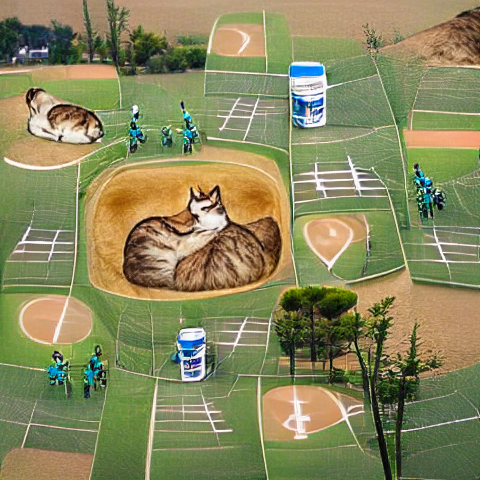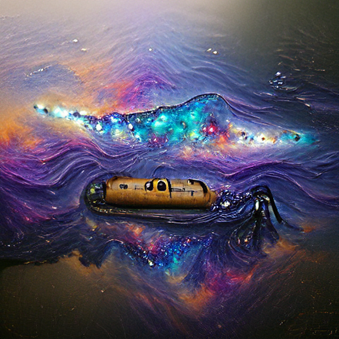AI Is Improving Its Artistic Skills, But Who Owns Its Output?

A few years ago, I inadvertently offended an artist friend of mine. We were discussing whether computers would ever generate art that matched what humans could create. She took the position that machines cannot "create" anything. I took the opposite position, contending that there is nothing humans can do that machines cannot. This post dives into AI's latest attempts to create art, then examines who owns the output.
It is a humbling reality, but artificial intelligence has already matched (and surpassed) us humans in a variety of tasks. Games are the most obvious examples. In 1997, Deep Blue beats us at chess; in 2016, AlphaGo beat us at Go (then AlphaGo Zero taught itself to beat AlphaGo while we watched on the sidelines). Games are typically rigid, mathematical things – the types of problems at which we would expect machines to excel. We think of art as something different, less rigid and more inspired – but even in art, machines are making headway.
Consider the following examples:
- StyleGAN changes a first input file to match the artistic style of a second using a
- DALL-E creates a series of images from text input alone
- Playform takes simple sketches and example art as input to generate new images in the input art's style
Below are a few examples of bizarre "art" that I created using the VQGAN-CLIP project, which uses a generative adversarial network to create images from text. The absurd text that I used to generate the piece is underneath the image.

"A baseball diamond with cats"

"Submarine floating in a galaxy"
This is not an art criticism blog, but we can safely conclude that these images are "strange." That said, they represent remarkable advancements in image processing, and many other AI-generated images are indiscernible from what human hands could create. There can be no serious doubt that machines will continue to improve their ability to mimic and surpass human artistic works in the years to come.
Who Owns AI's Art?
Even with the state of the art today, it is not hard to imagine a machine generating many works of art in moments that would take a human weeks or months to create. (Picasso was a prolific artist, but he would be no match for a machine programmed to generate art by the second.) Machines have already generated art with substantial real-world value. In 2018, for example, an AI-generated piece was sold as auction for $350,000. Because these pieces carry value, we must ask: When a machine generates an artistic work, who owns it?
U.S. law currently treats AI artists as tools of their creators. Consider a camera. When humans use a camera, they configure it (e.g., sets aperture, ISO, etc.), point and shoot. The law does not consider the camera to be a co-author of a photo – even though the camera is doing all the difficult work of sensing light from a source, then capturing that light in a medium (digital files today, film in the past). AI art programs are, at least as of today, similar to the camera. A human user configures the AI program by providing inputs to the model, then the AI produces its output. That output, and the copyright to it, belongs to the user.
The copyright cannot belong to the AI itself. This is because Section 306 of The Copyright Act protects "original works of authorship[,]" which implies a human hand in the process. 17 U.S.C. § 102(a) See also Burrow-Giles Lithographic Co. v. Sarony, 111 U.S. 53, 58 (1884). The Compendium of the U.S. Copyright Office Practices (3d.) Section 306 makes the human requirement clear: "The U.S. Copyright Office will register an original work of authorship, provided that the work was created by a human being." The Compendium provides some fun examples of non-human creation that are not entitled to copyright protection, including the famous case of the monkey selfie and works "purportedly created by divine or supernatural ." Id. at 313.2. See also Naruto v. Slater, 888 F. 3d 418 (9th Cir. 2018).
If AI-generated art properly belongs to those humans that used the AI tool, then developers of these AI tools should consider whether they, too, should receive some ownership rights in the art. The AI-as-a-camera analogy can only take us so far because AI tools do so much more than a camera: AI modifies input by applying creative algorithms to generate something altogether new. The user of the AI tool certainly has a hand in the creative development of the output, but so too does the developer of the AI tool. If the developer wishes to retain any rights in the AI tool's output, then the developer should consider including such terms in the tool's terms of use. These retained rights could be as light as a right of attribution or as heavy as a royalty in any resulting works.
